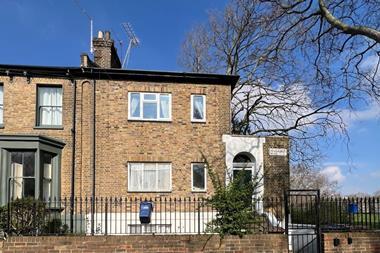Morgan Sindall Investments (MSIL) says its new tie-up with Hertfordshire County Council’s Herts Living represents the biggest development opportunity of any public sector partnership it has undertaken.

The joint venture, Chalkdene Developments, was set up in April to develop housing on HCC’s land, with an initial target to build 500 homes across 12 sites. If the council is impressed with MSIL’s speed and quality of building, it says it will put more land into the venture to develop a further 5,500 homes on county-council-owned land over the next 15 to 20 years, taking the total development value of the project to about £2bn.
As David Williams, leader of Hertfordshire Council, and Andrew Savege, director of new partnerships at Morgan Sindall, explain to Property Week, the number of homes built could end up being considerably higher if Chalkdene Developments is also able to partner with other public bodies to redevelop their land as well.
Find out more - Herts Living targets 500 homes with £2bn Morgan Sindall JV
Williams says the initial reasons for setting up Chalkdene were to adopt a smarter approach to generating income from its land and properties, and to speed up the pace of housing development.
“We started to think about ways that we could better use our surplus land across the county as traditionally, our unused sites had been sold to property developers after planning permission had been obtained,” he says.
While setting up Chalkdene, HCC decided to explore the opportunity for the joint venture’s development expertise to be used by any member of the Hertfordshire Property Partnership (HPP) – a working group of 25 public sector bodies including district and borough councils and NHS Trusts set up under the government’s One Public Estate initiative, which supports public sector collaboration to deliver housing.

“Opening up the joint venture to the property partnership allows us to share good practice and avoid re-inventing approaches to development and competing for scarce skills,” says Williams.
HCC owns and manages 2,000 properties of various types across the county, 40 of which have been earmarked for redevelopment. Where one of these sites borders surplus land owned by another public body that is part of the property partnership, the organisation could partner with Chalkdene to develop the site.
Large-scale portfolio
“The scale of the potential portfolio that the HCC JV can work across is greater than typically would be the case with a borough council,” says Andrew Savege, director of new partnerships at Morgan Sindall.
“That makes it different to the majority of property JVs that have been formed to date.”
Savege says public-service providers such as the emergency services and highway services could use the joint venture to consolidate the number of sites they use into one shared facility.
“The scale of the potential portfolio that the HCC JV can work across is greater than typically would be the case with a borough council”
Andrew Savege, Morgan Sindall
By combining the services on one site, land could be freed up for housing and the money received from house sales could help finance the new facility, he argues. Chalkdene could then develop the housing, the new facility, or both.
None of the HPP members have signed up to use Chalkdene yet, but the joint venture’s team, which is setting up its office in Hertford town centre, says it has had some encouraging conversations with local councillors.
The team hopes that other public bodies will employ its services, but has plenty to keep it going until then.






























No comments yet